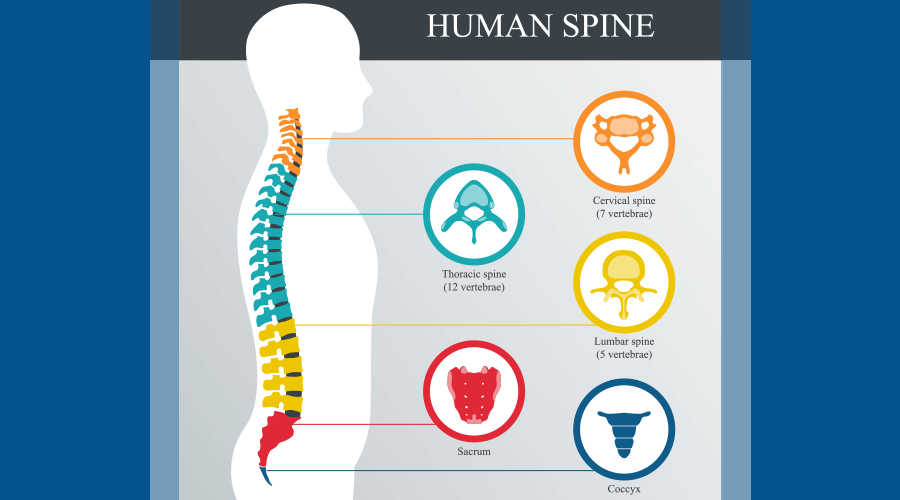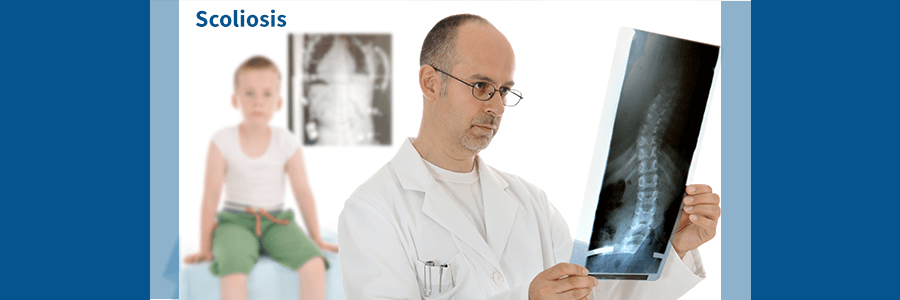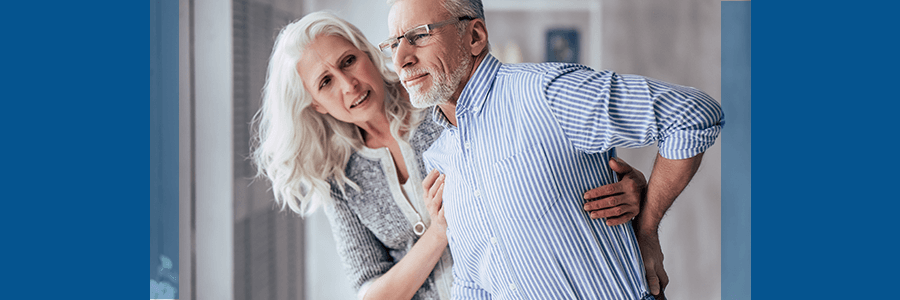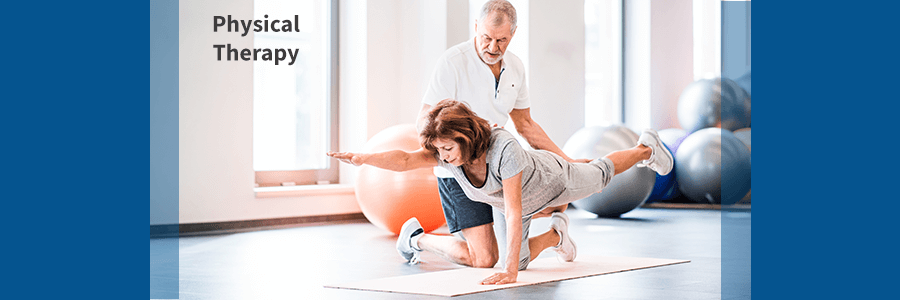-
Pain Topics
- Ankylosing Spondylitis (0)
- Arthritis (5)
- Back Pain (35)
- Bulging Disc (3)
- Degenerative Disc Disease (2)
- Facet Joint Syndrome (1)
- Failed Back Surgery (1)
- Foraminal Stenosis (2)
- Herniated Disc (5)
- Kyphosis (1)
- Neck Pain (14)
- Osteoporosis (2)
- Paget's Disease (1)
- Pinched Nerve (3)
- Radiculopathy (1)
- Sciatica (5)
- Scoliosis (5)
- SI Joint Arthritis (1)
- spinal cord injury (4)
- Spinal Deformity (1)
- Spinal Fractures (3)
- Spinal Stenosis (2)
- Spinal Tumors (1)
- Spondylolisthesis (3)
- Spondylosis (2)
- Whiplash (2)
-
Treatment Topics
- ALIF (2)
- Artificial Disc Replacement (1)
- At Home Care (4)
- Chiropractic Care (3)
- Corpectomy (1)
- Diagnostic Procedures (2)
- Diet & Healthy Lifestyle (6)
- Everyday Ergonomics (2)
- Exercises & Stretches (4)
- Facet Joint Infection (1)
- Foraminotomy (2)
- Kyphoplasty (2)
- Laminectomy (2)
- Laminotomy (2)
- Massage Therapy (1)
- Microdisectomy (2)
- Minimally Invasive Spine Surgery (13)
- Nonoperative Solutions (7)
- Pain Management (6)
- Physical Therapy (2)
- PLIF (3)
- Revision Spine Surgery (2)
- Scoliosis Brace (2)
- Self-Care (7)
- Spinal Fusion (3)
- TLIF (3)
- XLIF Corpectomy (4)
-
Media & Interactive
Spinal Deformity 101: Symptoms, Types, & Treatments
Spinal deformities occur when the spine bends or twists in an abnormal way. This can occur for any number of reasons. Minor spinal deformities may only require monitoring of the condition. However, more severe cases may need conservative treatments or even surgery.
Use this guide to understand the spine and common deformities. In addition, you will discover the treatments that doctors use to reduce symptoms and repair the spine.
Understanding the Spine
The spinal column houses the spinal cord. This is the major communication road between your brain and all other parts of the body. The vertebral column consists of 24 moveable bones that are connected by ligaments. Each vertebra has a tripod design that keeps the bones aligned and connected. Between each of these bones are shock-absorbing discs which provide the spine with flexibility and protection.
The spine is created by four major regions:
- Cervical spine or neck: This area supports the head and protects the nerves; it starts at the base of the skull and ends at the upper back.
- Thoracic spine or upper back: Just below the cervical spine, these vertebrae provide structural support and stability to the upper back. The thoracic spine attaches to the rib cage and helps to protect many of the body’s vital organs.
- Lumbar spine or lower back: These are the largest vertebrae in the spine, starting just below the shoulder blades and running down the lower back. This area supports the weight of the torso and allows more motion than other areas of the spine.
- Sacral region or bottom of the spine: This area forms the bottom of the spine and connects the lumbar spine to the tailbone.

Why Does the Spine Curve?
The normal spine varies in size and shape. No one has a perfectly straight spine. In fact, normal curves in the spine help the body to distribute weight evenly and withstand the shocks of movement.
A healthy spine resembles a stretched out “S” shape, curving toward the front and back of your body. Lordosis refers to the inward curves of the neck and lower back. Kyphosis, on the other hand, is the outward curve of your upper back. When these areas curve abnormally, the terms lordosis and kyphosis refer to specific spinal conditions.
The spine can curve abnormally for a variety of reasons. Sometimes these issues are present at birth. Other times, the growing process affects the spine. For adults, the effects of the aging process are usually to blame. Arthritis, osteoporosis, and degenerative discs often play a role in adult spinal deformities. Those who have injuries or have had previous spinal surgeries also run a higher risk.
Common Types of Spine Deformities and Other Spinal Conditions
Scoliosis
A typical spine curves forward and backward in the body. But, a side-to-side bend is abnormal. This type of bend, usually found in the upper back, is known as scoliosis.
Many cases of scoliosis involve younger patients. In fact, sometimes the curve is present at birth—known as infantile scoliosis. The most common form, adolescent idiopathic scoliosis, occurs in children between the ages of 10 and 17.
Adults can develop scoliosis as well. When this occurs, it is usually the result of degenerative arthritis in the lower back.
Those who suffer from scoliosis often have uneven shoulder blades or hips. Some may feel an imbalance while sitting or moving. Those with severe scoliosis may experience back pain, leg weakness or numbness, sciatica, or even difficulty breathing.

Lordosis
When the spine’s inward curves become abnormal, it results in lordosis. This is a deep sway in the lower back. In some cases, lordosis can also occur in the neck. Those who suffer from the condition often have an exaggerated, backward-leaning posture. Their chest and shoulders may hitch backward while their buttocks appear more pronounced.
Although this condition can occur at any age, it is most common in older people. Age-related lordosis is due to osteoporosis and spinal cord compression. Severe cases of lordosis result in back and leg pain, hip problems, weak bladder control, and difficulty moving.
Kyphosis
Kyphosis involves an exaggerated outward curve of the spine. Most often found in the thoracic spine (or upper back), the deformity creates a humpback posture. The upper body leans forward and downward with the inability to stand up straight.
In age-related cases, kyphosis is often the result of osteoporotic compression fractures. Previous spinal surgeries, poor posture, and disc degeneration also may play a role. Severe kyphosis can cause breathing and digestion problems, as well as back and neck pain or limited movement.
Ankylosing Spondylitis
This type of arthritis produces inflammation in the spine’s joints and ligaments. Over time, the joints and vertebrae fuse, causing the spine to become rigid and immobile. Ankylosing Spondylitis (AS) can also affect the hips, ribs, shoulders, and other joints of the body.
The causes of AS are currently unknown. But, some research points to genetic factors. Symptoms include pain and stiffness in the lower back that usually travels as the condition worsens. Reduced range of motion, eye irritation, compression fractures, and even heart problems may occur in advanced cases.

Thoracic Insufficiency Syndrome (TIS)
Children who suffer from abnormalities of the spine such as scoliosis may develop this rare disorder that affects the lungs. (TIS) occurs when the lungs can’t develop normally because rib and spinal deformities do not provide enough space.
TIS tends to occur in children under the age of ten. In addition to signs of spinal deformities, a child will have a narrowed chest, uneven shoulders, and a short neck. Labored breathing and fatigue are also common with this syndrome.
Diagnosing and Treating Spinal Deformities
If you believe that you have problems with your spine, then it’s best to consult with a doctor. He or she will take a complete medical history and perform a physical exam to determine the cause and severity of your spine issues. In many cases, diagnostic tests are ordered, so doctors have a clear picture of your spine abnormalities. These include:
- X-rays: Images of the vertebral column which may reveal arthritis, factures, bone spurs, or slippage of the vertebrae.
- Computed Tomography (CT) Scan: A noninvasive x-ray test aided by a computer to make a 2-dimensional image of your spine. The CT helps observe any changes to the bony structures of the spine.
- Magnetic Resonance Imaging (MRI): Unlike x-rays, MRIs can detect damage to the discs and ligaments using a magnetic field and radiofrequency waves. This gives a clearer picture of your condition and helps to assess any spinal cord injury.
- Myelogram: This specialized x-ray uses contrast dye in the spinal canal. The image provides doctors with a detailed view of the spinal cord and nerves. This helps with assessing nerves that are pinched by a disc, bony overgrowths, or stenosis.
- Bone Density Test: If osteoporosis is suspected, then a bone density scan can determine the strength of your vertebrae and detect any bone loss.
Conservative Treatments
After a thorough exam and accurate diagnosis, a doctor will prescribe treatments to help with symptoms and/or correct the spinal deformities. Those with mild or moderate conditions usually only require management of symptoms. Conservative treatments include:
Pain Management
Over-the-counter or prescription pain medications can help to reduce back pain. Nonsteroidal anti-inflammatory drugs (NSAIDs) such as aspirin or ibuprofen can reduce inflammation and provide pain relief. Steroids can also help to reduce the irritation and swelling of the nerves. Narcotics relieve intense pain, but the potential for abusing these drugs must be considered. Cortisone injections may provide relief from joint arthritis or mild nerve compression.
Physical Therapy
With the help of a physical therapist, you can learn exercises and stretches to strengthen the muscles that support the spine and other affected areas. This helps with flexibility, range of motion, and balance.

Scoliosis Brace
Children with scoliosis often benefit from bracing since it encourages proper spine growth. Adults may use a brace to relieve pain. But, since their spines have matured, it will not correct the deformity.
Surgical Treatments
If conservative treatments don’t provide pain relief or your condition is so severe that it affects the quality of your life, surgical treatments may be the next step. The goal of surgery is to stabilize the spine at the area of the deformity.
During a posterior fusion, an orthopedic surgeon will add tiny pieces of bone, known as bone grafts, to the affected area. This allows your vertebrae to grow together and restores proper alignment. The doctor will also add metal rods, screws, hooks, or wires to help keep the spine in place for proper fusion. After a recovery period of 3 to 12 months, the spine will not be able to curve abnormally.
The surgeon may elect to do the same procedure using an incision in the front of your body near the ribs. This is known as an anterior fusion.
In some cases, a spinal osteotomy can help to correct alignment. This procedure works by cutting away a piece of the vertebra to restore proper positioning.
When Surgery Seems Like Your Best Option…
Some spinal deformities won’t respond to conservative treatments. If you’re frustrated by your spinal condition and looking for the best way to regain your quality of life, then Dr. Daveed Frazier of New York City Spine wants to help. Dr. Frazier is a Harvard-educated, board-certified orthopedic spine surgeon who specializes in delivering results.
Dr. Frazier wants you to avoid surgery whenever possible. He works with a team of neurologists, physical therapists, chiropractors and other non-operative specialists to make sure that you’ve tried every option for your spine condition. If surgery is needed, then you can rest assured that Dr. Frazier’s expert care will help you reclaim your life.
Contact NYC Spine today at (855) 210-0899 to see how our team of spine experts can help.
TAGS: Spinal Deformity
Explore New York City Spine

